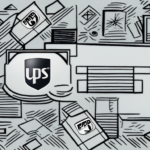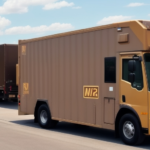Understanding UPS Shipping Rates for Small Businesses
For small businesses, finding affordable and efficient shipping solutions is essential to ensure customer satisfaction and maintain profitability. United Parcel Service (UPS) has long been a preferred shipping carrier, thanks to its expansive global network, reliable service, and competitive rates. In this comprehensive guide, we delve into the intricacies of UPS shipping rates for small businesses, empowering you to make informed decisions about your shipping strategy.
Why UPS is a Popular Choice for Small Business Shipping
Several factors make UPS a preferred shipping carrier for small businesses:
- Extensive Delivery Network: With operations in over 220 countries and territories, UPS enables businesses to reach both domestic and international customers efficiently.
- Diverse Range of Services: UPS provides a variety of shipping options, including ground, air, and international services, catering to different business needs and scales.
- Reliability and Tracking: UPS is renowned for its dependable delivery times and offers robust tracking and delivery confirmation features, enhancing transparency and customer trust.
- User-Friendly Online Platform: The UPS website and mobile app facilitate easy shipment creation, label printing, and package tracking, streamlining the shipping process for businesses.
- Competitive Pricing and Discounts: UPS offers tiered pricing and volume discounts for small businesses, helping to reduce shipping costs as business scales.
According to a 2023 report from UPS Business Solutions, small businesses that leverage UPS's extensive services can reduce shipping costs by up to 20%, while also improving delivery speed and reliability.
How to Calculate UPS Shipping Rates Based on Package Weight and Dimensions
The cost of shipping with UPS depends on several factors, including package weight, dimensions, and delivery distance. To calculate the shipping rate for your package, you can use the UPS shipping calculator. By entering your shipment's weight, dimensions, and destination address, the calculator provides a detailed shipping estimate tailored to your specific needs.
UPS offers various shipping options, such as ground, air, and international shipping, each with its own set of rates and delivery times. It's crucial to select the option that best aligns with your business requirements. Additionally, UPS provides discounts for businesses that consistently ship packages, making it beneficial for small business owners to explore their business shipping program to optimize costs.
Data from Statista indicates that accurate weight and dimension measurements can reduce shipping costs by up to 15%, emphasizing the importance of precise package information.
The Impact of Distance and Delivery Speed on UPS Shipping Rates
The distance between the origin and destination of a shipment significantly affects UPS shipping rates. Longer distances generally incur higher shipping costs due to increased transportation resources required. Additionally, the speed of delivery plays a critical role; expedited shipping options, such as overnight or two-day delivery, are more expensive compared to standard ground shipping.
For instance, shipping a package overnight within the continental United States can cost approximately 2-3 times more than standard ground shipping, according to UPS Rate Calculator.
Furthermore, the weight and dimensions of the package also impact shipping rates. Heavier and larger packages may incur additional fees as they consume more logistical resources. Special items, such as hazardous materials or fragile goods, require additional handling and packaging, potentially increasing the overall shipping cost.
How UPS Shipping Rates Compare to Other Carriers for Small Businesses
When evaluating shipping options, it's essential to compare UPS's rates with other carriers like FedEx and USPS. While pricing varies based on factors such as shipping volume and location, UPS remains competitive in the market. According to a 2023 Forbes analysis, UPS offers slightly higher rates than USPS for domestic shipping but provides superior tracking and reliability.
UPS's diverse range of services often makes it more suitable for businesses with international shipping needs, where USPS may have limited options. Additionally, tools and resources provided by UPS, such as discounts for online label printing and dedicated customer support, can offset the cost differences compared to other carriers.
Tips for Negotiating Better UPS Shipping Rates for Your Small Business
Reducing shipping costs is a priority for many small businesses. Here are some strategies to negotiate better UPS shipping rates:
- Establish a Shipping Volume History: Demonstrating consistent shipping volumes can position your business for better rates. UPS often rewards loyal customers with discounts.
- Bundle Shipments: Consolidating multiple shipments into a single larger shipment can take advantage of UPS's pricing tiers, resulting in lower per-unit costs.
- Contact UPS Directly: Engage with a UPS account manager to discuss your shipping needs and negotiate rates tailored to your business.
Exploring alternative shipping options, such as shipping software, can also help compare rates across different carriers, ensuring you receive the best possible deal.
Understanding Additional Fees and Surcharges in UPS Shipping Rates
In addition to base shipping rates, UPS may apply various fees and surcharges to your shipments. Being aware of these additional costs can help you manage your shipping budget more effectively:
- Oversize Fees: Packages exceeding standard size limits incur additional charges.
- Remote Area Surcharges: Deliveries to rural or hard-to-reach areas may attract extra fees.
- Signature Confirmation: Requiring a signature upon delivery adds to the shipping cost.
Moreover, the nature of the items being shipped can influence additional fees. Shipping hazardous materials, fragile items, or perishable goods requires special handling and packaging, which UPS may charge a premium for.
International shipments are subject to customs fees, taxes, and duties, significantly impacting the overall shipping cost. It's crucial to research and understand the regulations and fees associated with shipping to different countries before dispatching your packages. The UPS International Shipping Guide offers detailed information on these additional costs.
How to Use UPS Technology to Streamline Your Small Business Shipping Process
Leveraging UPS's technology solutions can greatly enhance the efficiency of your shipping operations:
- UPS WorldShip: This software application automates shipping processes, from label creation to document printing, reducing manual efforts and minimizing errors.
- UPS MyChoice: Provides advanced tracking features, allows management of delivery preferences, and sends real-time notifications, ensuring better control over shipments.
- UPS Developer Kit: Enables businesses to integrate UPS shipping functionalities directly into their websites or applications, offering customers seamless shipping experiences.
Additionally, UPS offers a range of packaging solutions designed to optimize shipping efficiency. From custom packaging to eco-friendly materials, selecting the right packaging can reduce costs and improve package safety during transit.
Integrating these technologies can lead to up to a 30% increase in shipping efficiency, as reported by TechRadar.
Common Mistakes to Avoid When Using UPS for Small Business Shipping
Avoiding common pitfalls can save your business time and money. Here are some frequent mistakes to steer clear of when using UPS:
- Incorrect Package Weight and Dimensions: Inaccurate measurements can lead to unexpected fees and delays. Always double-check your package details before shipping.
- Inaccurate Recipient Address: Ensure that all shipping information is correct to avoid misdeliveries and additional costs.
- Improper Packaging: Using inadequate packaging materials can result in damaged goods and increased shipping costs due to the need for replacements.
Additionally, neglecting to take advantage of available discounts and promotions can lead to higher shipping expenses. Regularly review the UPS discounts to maximize savings.
The Benefits of Using a Third-Party Logistics Provider (3PL) for UPS Shipping
Managing shipping operations can be complex and time-consuming for small businesses. Partnering with a third-party logistics provider (3PL) offers several advantages:
- Carrier Selection: 3PLs have expertise in selecting the most cost-effective and reliable carriers for your shipping needs.
- Shipping Optimization: They can streamline your shipping processes, reducing costs and improving delivery times.
- Cost Reduction: Through negotiated rates and bulk discounts, 3PLs can lower your overall shipping expenses.
Moreover, 3PLs provide access to advanced technologies for tracking and managing shipments, which might not be feasible for small businesses to implement independently. This partnership allows you to focus on core business activities while ensuring efficient shipping operations.
Case Studies: Small Businesses That Have Successfully Reduced Their UPS Shipping Costs
Real-world examples demonstrate the effectiveness of strategic shipping management:
- Handmade Soap Company: By increasing their shipping volume and consolidating shipments, this business negotiated better rates with UPS. Additionally, optimizing packaging by using smaller boxes and reducing excess padding not only saved costs but also minimized environmental impact.
- Online Retailer: Implementing UPS WorldShip allowed this retailer to automate their shipping processes, resulting in a 25% reduction in shipping errors and a 15% decrease in overall shipping costs.
- Artisan Jewelry Store: Partnering with a 3PL enabled this business to leverage bulk shipping discounts and advanced tracking technologies, enhancing customer satisfaction while lowering expenses.
These case studies highlight the importance of optimizing shipping strategies to achieve significant cost savings and operational efficiencies.
Best Practices for Managing and Tracking Your Small Business Shipments with UPS
Effective management of shipping operations is vital for small businesses. To ensure smooth and efficient delivery, consider adopting the following best practices:
- Utilize UPS Technologies: Tools like UPS WorldShip, UPS MyChoice, and Quantum View can streamline your shipping process, reduce errors, and provide valuable insights into your shipping activities.
- Maintain Accurate Records: Keeping detailed and up-to-date records of all shipments helps in managing expenses, tracking performance, and identifying areas for improvement.
- Partner with a Reliable 3PL: If managing shipping needs becomes overwhelming, collaborating with a reputable third-party logistics provider can ensure efficient and cost-effective shipping operations.
- Optimize Packaging: Use appropriate packaging materials to protect your products and reduce shipping costs. Consider lighter and smaller packaging options to minimize weight and dimensional fees.
- Communicate with Customers: Utilize UPS's tracking and notification services to keep customers informed about their shipment status. Transparent communication enhances customer satisfaction and reduces inquiries related to shipments.
Implementing these best practices can lead to a more organized shipping process, reduced costs, and improved customer experiences.
In conclusion, UPS remains a reliable and cost-effective shipping carrier for small businesses. By understanding UPS shipping rates, leveraging available tools and technologies, and implementing strategic cost-saving measures, your small business can optimize its shipping operations and enhance overall efficiency.






















